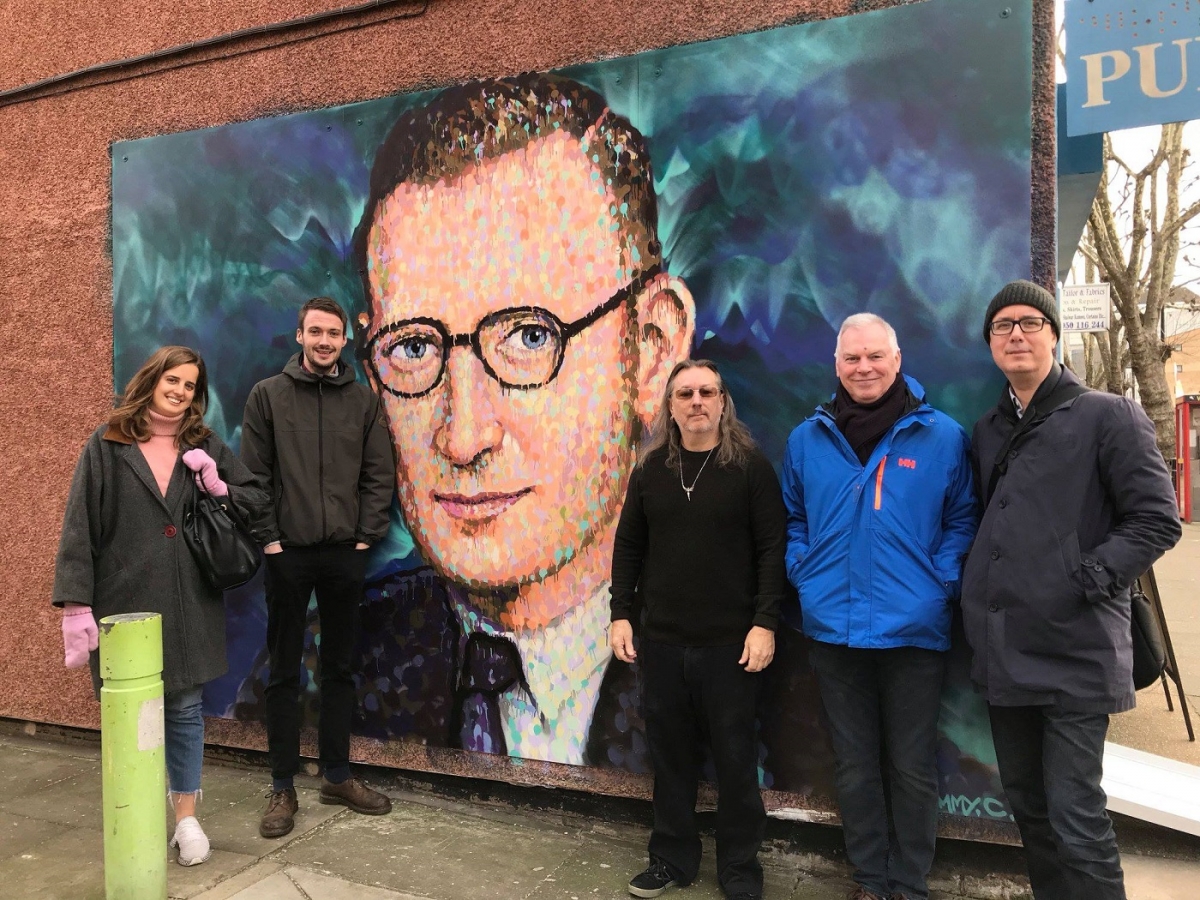
In 2018, QSA became the local trusted organisation for the Big Local fund for the Aberfeldy area in Tower Hamlets.
We spoke to project manager Liam Harney about what's been happening with the project.
Can you tell us a bit about the Aberfeldy area, its history and what is going on today?
Aberfeldy is an estate located in the most eastern part of Poplar. Many of the long-term residents refer to it as their ‘village’ because it has historically had a close-knit community and a strong sense of identity. It’s bordered on all three sides by the River Lea and two main roads, making it a bit of an island, cut adrift from the rest of Poplar. For a lot of people this has made Aberfeldy ‘the forgotten community’ of Tower Hamlets.
The area is currently undergoing a huge period of change. The local housing association has teamed up with a private property developer to regenerate the estate, which involves the demolition of many people’s homes to be replaced by new blocks of flats. As a result, some people have had to leave the area, with a lot of the new flats being sold as luxury flats to newcomers. This is causing some tension, but also the potential for newcomers to add to the community.
There’s also a huge new development of 2,800 homes being planned on a disused patch of land at the north of the estate. Combined with the existing regeneration, the area is due to be transformed in a big way. We’re trying to take action so that the existing community can benefit from the coming changes, and that the newcomers have a thriving, welcoming community to become a part of.
Aberfeldy Big Local is about harnessing the skills, passion and knowledge of local residents to make lasting and positive community change through the Big Local fund.
What types of things have you been doing to achieve this and what does a typical day involve?
The people in the community have a lot to offer; they have skills and knowledge that can benefit other people. We try to harness this in a few different ways. Firstly, we have a partnership of Aberfeldy residents who meet monthly to act in the interests of the whole estate and make collective decisions about how to invest the Big Local money. We’re growing our voice as representatives of the community and are increasingly able to gain the respect and time of property developers and our local councillors to advance the community’s interests.
Then we have our Community Chest, which offers up to £500 each to local people who’ve got ideas for activities and events that can bring the community together. Through this we find out about local people's hidden talents and work to put these to good use in the area. So far, we've had a singing group, bike maintenance workshops, knitting and crochet lessons, exercise groups, and cricket.
On top of this, we fund larger initiatives that help keep the community acting as a community. We’ve funded the establishment of a micro-pub/tea room to give people somewhere to socialise with their neighbours. We’re also sponsoring Aberfeldy FC, the local football team, run by residents. They’ve been able to expand their youth teams, start a women’s football team and set up a weekly youth club with our support.
My role is to help make some of this happen, connecting people to others in the area and encouraging residents to get involved. My days vary so much - sometimes it’s meeting with developers, discussing ideas with residents, or emceeing the karaoke at the pub (although, this isn’t in my job description!).
Why is social infrastructure, like the Tommy Flowers Pub important to communities like Aberfeldy?
Pubs, cafes, youth clubs and community centres are important for all communities. If you don’t have anywhere to meet and spend time with your neighbours, then it’s hard to feel part of the community. A lot of areas in the UK are experiencing the gradual closure and decline of these places, which I think is devastating for communities.
In Aberfeldy, there’s a particular problem with the decline of these spaces due to a lack of investment and the land prices, making these places prime targets for property developers. The old Aberfeldy Tavern, for example, was demolished to make way for flats around five years ago. The pub had stood in some form for over 100 years and was a key hub for the community - then all of a sudden it went and the area lost a key place for people to socialise. We’ve got photos of one of the festivals that the community used to organise in the 1970s on the walls in the Tommy Flowers. These were organised completely by local people, centred around the pub and the local TRA. It was more than just a pub. It was a wellspring for all sorts of local, community activity.
What are the biggest challenges in managing the project?
There can be a lot of different things to manage at the same time. This means it’s important to stay on top of things and to always follow up with opportunities that arise, so as not to miss out on something that could have a good impact in the area. Sometimes this means we have to act very quickly to make sure our voices are heard, and other times we need to play a long game of gradually building trust, recognition and respect amongst the decision makers.
What are the key acheivements so far for ABL and what is on the horizon?
Over the last two years, we’ve achieved a lot. We now have a regular resident’s group that meets to discuss goings on in the area. This harks back to the TRAs of the past and is an achievement in itself that 10-12 local people, with jobs, families, commitments and lives of their own, come together on a Tuesday night to build community. Because of this commitment from residents, we are growing in recognition from local decision-makers, which is gradually earning us more of a say about the future of the estate.
We’re in discussions to ensure a permanent pub is built as part of the regeneration, and we’re about to be leading on the creation of designs for our green spaces and football pitch, possibly including the development of ways to generate income for the community from these. We’re also engaging much more seriously and constructively with the new development planned for the area. We see opportunities here for local people to access construction jobs and for some of the homes built to be prioritised for Aberfeldy residents, so that families can stay together in the community.
